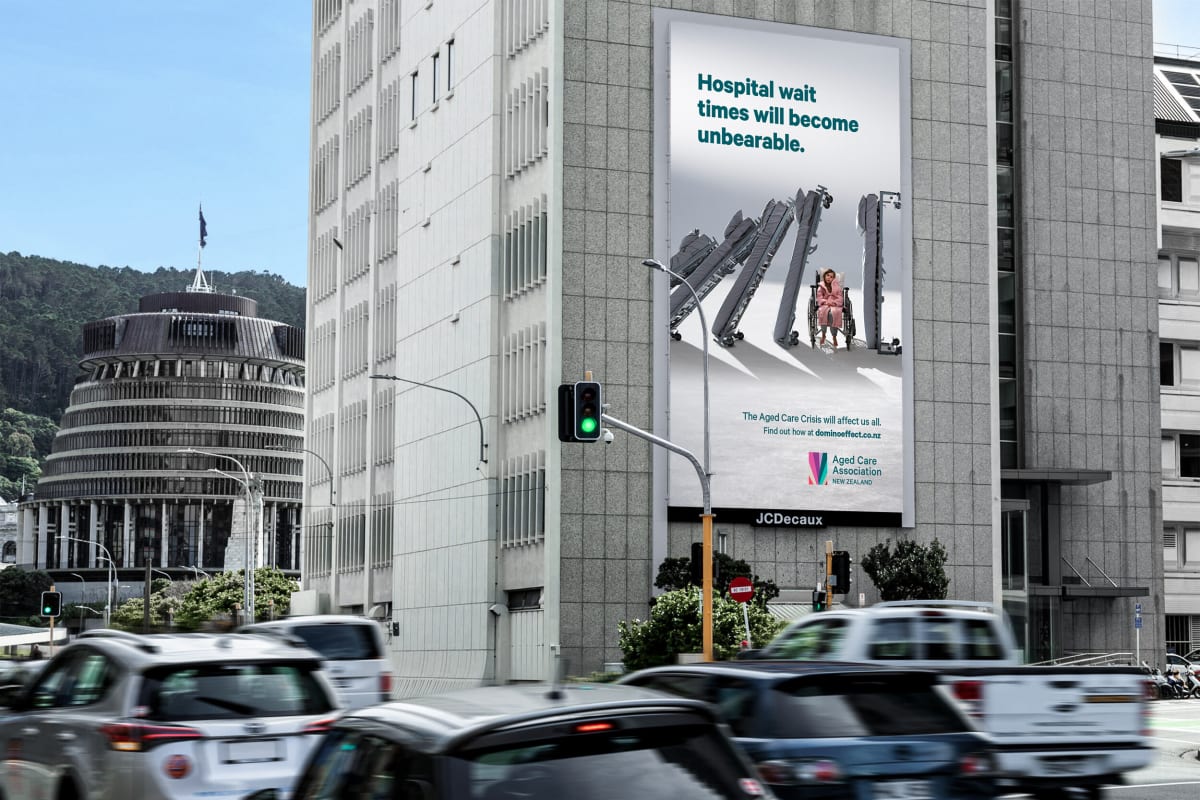
Aged Care Association interim chief executive and former MP laments lack of aged care policy in the 2023 election
The two major political parties have made health a cornerstone of their election campaigns, but the head of New Zealand’s largest healthcare sector on the brink of crisis feels completely ignored.
In August, the New Zealand Aged Care Association, which represents New Zealand’s care home operators, launched a billboard campaign targeting politicians in an attempt to improve funding problems in the industry.
The campaign seems to have been in vain because with October 14 drawing ever nearer, Labour and National have both rolled out their health policies without mention of aged care.
READ MORE: * Damning report into rest-home closure * In aged care crisis, the grass is always greener * Te Whatu Ora ‘deliberately underfunding us’, aged care group claims
Aged residential care organisations, which provide live-in hospital-level care to elderly residents, have long complained that chronic underfunding from central government has undermined its viability.
The industry is easily New Zealand’s largest provider of healthcare services, with about 40,000 beds compared with the public health system’s 13,000 odd beds.
Funded by a day rate from Te Whatu Ora Health New Zealand, the amount it receives per resident has been constrained the industry’s ability to grow with the ageing population, and as inflation and public sector nursing wages grew, beds began to shut down.
By 2030, New Zealand will need 13,200 more aged care beds.
In the past 12 or so months, more than 1000 beds have closed permanently and 1200 temporarily because of staff shortages. The industry body expects more to follow.
Anything but
Aged Care Association interim chief executive and former National Party MP Katherine Rich said the major parties want to talk about everything but aged care.
“They are comfortable talking about issues ranging from EV plugs, gang patches, taking GST off carrots, so many different policy ideas, but getting them to discuss aged care has been incredibly difficult.”
Rich, who served in Parliament between 1999 and 2008, said it was totally different from the 2022 election across the Tasman when Anthony Albanese was elected prime minister.

“Aged care was front and centre, it was a big issue for which there was a huge amount of public outrage and interest. So political leaders addressed the issues and so both major parties had multi-page policy documents talking about what they would do for aged care.”
Rich said the same sort of issues around substandard care because of nursing levels and poor pay unveiled by the Australian Royal Commission were also prevalent in New Zealand.
“We've got the same sort of issues and yet compared to political leaders in Australia, New Zealand's political decision makers are just hiding under the duvet and hoping the large cohort of over 80s are somehow going to make alternative plans.”
Health implications
Policy targeting 85-year-olds may not be a sexy election winner, but it’s a space that has serious implications for the wider healthcare sector.
“It ultimately affects everybody in the form of emergency departments under pressure, higher thresholds to get surgeries. Many of our hospitals are starting to look like retirement homes because there simply aren't places in the community for them to go.”
Rich said she was hearing anecdotes of patients that could move to aged care facilities waiting for months in a public health system bed, which are already a limited resource and have a hefty burden on the taxpayer of something like $1700 a day, compared with under $200 in an aged care unit.
The spending forecasts in the Pre-election Economic and Fiscal Update released earlier this month allow for very little in the way of additional large-scale funding, but Rich said attention was going to have to be given to the subject regardless as the baby boomer generation starts requiring care and homeownership rates drop.
Another solution is greater adoption of family care or in-home care models, but upscaling these to accommodate the ageing population would also require substantial investment in systems and training.







